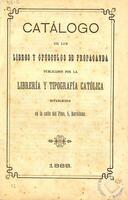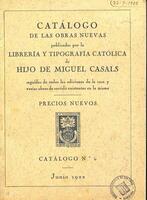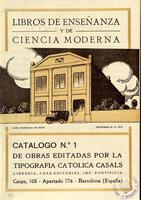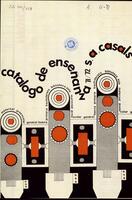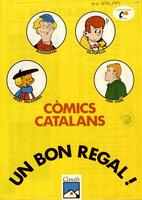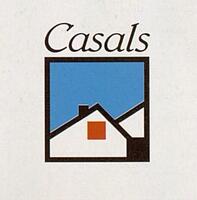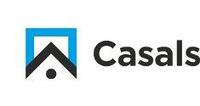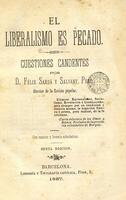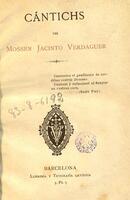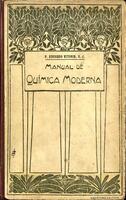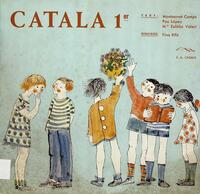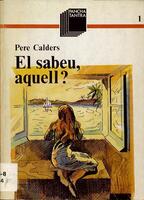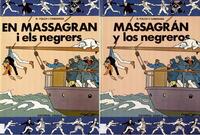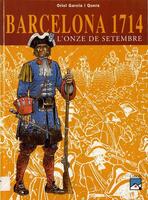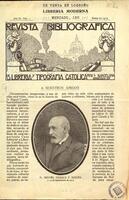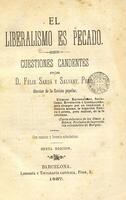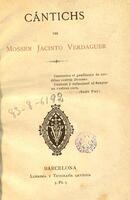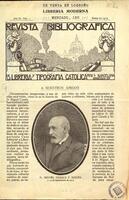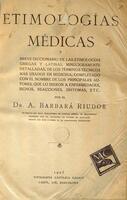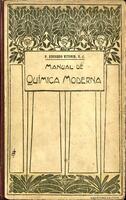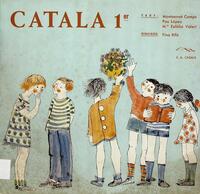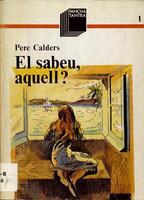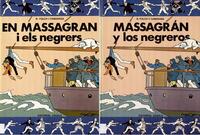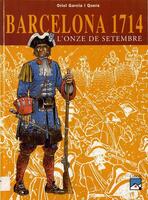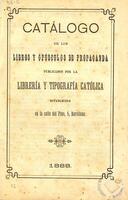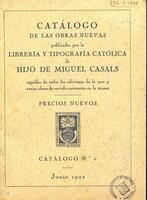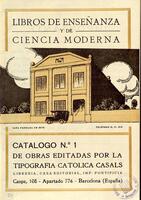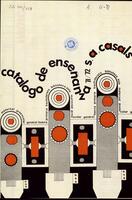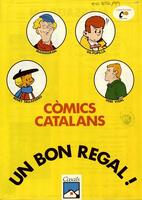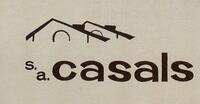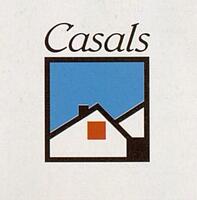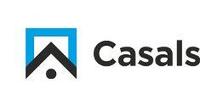Casals
(Updated 08/10/2024)
In 1870, Ramon Casals i Xiqués and Primitiu Sanmartí founded the Tipografía Católica publishing house along with a bookshop and printing workshop. When Sanmartí had to flee the country for political reasons in 1873, Casals purchased his former partner’s share and brought in his brother Miquel. At the beginning, this publishing house primarily issued religious works, which sought to counter the rising abandonment of religion, as well as works by the ecclesiast and apologist Félix Sardá y Salvany, whose numerous works and booklets it published. Three religious magazines and different works by Jacint Verdaguer also date from this early period.
Publication of the Revista bibliogràfica started in 1906. The catalogue was diversified with contents other than religious themes, although they still predominated.
+ informationSearch collections
Catalogue of publishers and booksellers from the Bergnes de las Casa collection (Biblioteca de Catalunya)
Catalogues of publishers of Catalonia (Biblioteca de Catalunya)
Llanas, Manuel. L’edició a Catalunya. Segle XIX. [Barcelona]: Gremi d’Editors de Catalunya, 2004.
Llanas, Manuel. L'edició a Catalunya. Segle XX (fins a 1939). Barcelona: Gremi d'Editors de Catalunya, 2005.
Llanas, Manuel. L’edició a Catalunya. Segle XX (1939-1975). Barcelona: Gremi d’Editors de Catalunya, 2006.
Casals
Description
In 1870, Ramon Casals i Xiqués and Primitiu Sanmartí founded the Tipografía Católica publishing house along with a bookshop and printing workshop. When Sanmartí had to flee the country for political reasons in 1873, Casals purchased his former partner’s share and brought in his brother Miquel. At the beginning, this publishing house primarily issued religious works, which sought to counter the rising abandonment of religion, as well as works by the ecclesiast and apologist Félix Sardá y Salvany, whose numerous works and booklets it published. Three religious magazines and different works by Jacint Verdaguer also date from this early period.
Publication of the Revista bibliogràfica started in 1906. The catalogue was diversified with contents other than religious themes, although they still predominated.
After the death of the Casals brothers, the publishing house came to be owned by their heirs, and in 1918 the company was divided. A son of Miquel Casals, Ramon Casals, worked under the name Librería y Tipografía Católica de Hijo de Miguel Casals, and two sons of the founder, Miquel and Xavier Casals i Gambús, worked under the name Tipografía Católica Casals. They continued to publish books on religion and morality, as well as literature, language courses and books on the experimental sciences (chemistry, physics, biology, etc.), medical works and other volumes on law and commerce.
Between the 1950s and 1960s, two son of Xavier Casals, Ramon and Joan Casals i Lamarca, joined Tipografía Católica Casals. The publishing house kept issuing its traditional collection of religious books, but by then it primarily published university science textbooks in conjunction with the Jesuits (Institut Químic de Sarrià and Institut Biològic de Sarrià) and the Faculty of Medicine of the University of Barcelona. The bookshop and printing press continued operating as well. After the mid-1960s, the company started to specialise in schoolbooks, and in 1966 it changed its name to S.A. Casals d’Edició i Llibreria, and in 1981 to its current name, Editorial Casals.
After a phase of expansion, coupled with the loss of most of its shareholders, the Casals family once again resumed ownership of the company in 1994 and purchased the Madrid-based publishing house Magisterio, which significantly stepped up its presence in Spain and Latin America. Prior to that, in 1992, it had purchased Editorial Combel, which specialised in children’s and illustrated books, and in 2006 it created Editorial Bambú, a children’s and young reader imprint which published literary works from all periods. Casals currently publishes schoolbooks in both Catalan and Spanish on practically all subjects and educational levels (from preschool to baccalaureate) as well as children’s and young reader literature, comics (including Massagran) and catechisms.
The Casals publishing house is the second oldest Catalan house still operating today after Publicacions de l'Abadia de Montserrat.
Casals
Illustrators and photographers
Casals
Collections
As Tipografía Católica Casals, the publishing house created a range of collections which can primarily be grouped into two main parts. The first are schoolbooks and books on modern science, with works on language learning methods, textbooks and treatises on chemistry, physics, biology, etc., medical works and other compendia on law and commerce. The second is books on religion, morality and literature, with lives of saints or historical studies and collections such as the Biblioteca de la Familia Cristiana collection.
As Casals, the publishing house specialised in books for all educational levels (with different names depending on the period), from preschool to baccalaureate, as well as supplementary schoolbooks, such as stories or comics for children or young readers. Catalan and Spanish are the predominant languages, but it has also published works in Galician and Basque.
Casals
Outstanding works
Religious works were at the heart of the publishing house’s catalogue in its early years. Over time, the titles diversified as educational and scientific works were added, even though religious works still predominated. Later, Casals specialised in schoolbooks (today from preschool to baccalaureate) in both Catalan and Spanish. Supplementary educational books, comics with such popular characters as En Massagran, historical comics and catechisms round out the catalogue.
-
The popular, and controversial El liberalismo es pecado became a seminal work in the movement known as “intransigent Catholicism”.
Sardá y Salvany, Félix. El liberalismo es pecado: cuestiones candentes. Barcelona: Librería y Tipografía Católica, 1887.
-
In the early years, the publishing house issued numerous works by Jacint Verdaguer in both book and leaflet format.
Verdaguer, Jacinto. Cántichs. Barcelona: Llibrería y Tipografía Católica, [1889].
-
In 1906, the publishing house launched the publication of the Revista bibliográfica, which featured new books and brief articles that undertook “the mission of Catholic propaganda sought by this publishing house and bookshop”.
Revista bibliogràfica y boletín de anuncios de la Librería y Tipografía Católica. Barcelona: Librería y Tipografía Católica, 1906-[19--].
-
In 1918, the publishing house began to issue its first technical and scientific books (chemistry, geometry, medicine, etc.), even though religious books still had a strong presence in its catalogue.
Barbará Riudor, A. Etimologías médicas o: breve diccionario de las etimologías griegas y latinas, minuciosamente detalladas, de los términos técnicos más usados en medicina (...) Barcelona: Tipografía Católica Casals, 1925.
-
The Manual de química moderna by Eduardo Vitoria, the founder of the Institut Químic de Sarrià, became a reference work in teaching chemistry for many years, and it reached 14 editions with more than 100,000 copies.
Vitoria, Eduardo. Manual de química moderna teórica y experimental con sus principales aplicaciones al comercio y a la industria. Barcelona: Tipografía Católica Casals, 1932.
-
Book teaching the Catalan language targeted at students in what was then called Elementary Baccalaureate, with illustrations by Fina Rifà.
Camps, Montserrat (et al.). Català 1er: per a nens d’onze anys. Barcelona: Casals, DL 1968.
-
First title in the Panchatantra young reader collection, supervised by J. M. Carandell and Ramon Folch i Camarasa, which was designed to complement schoolbooks.
Calders, Pere. El sabeu, aquell? Barcelona: Casals, 1983.
-
Catalan and Spanish editions of the popular comic featuring the character En Massagran by Josep Maria Folch i Torres, which was later continued by his son Ramon Folch i Camarasa, with illustrations by Josep M. Madorell.
Folch i Camarasa, Ramon. En Massagran i els negrers. Barcelona: Casals, 1986.
Folch i Camarasa, Ramon. Massagrán y los negreros. Barcelona: Casals, 1986.
-
In addition to comics targeted at children and young readers (Massagran, Jep and Fidel or Pere Vidal), Casals also published a collection of historical comics with the text and drawings by Oriol Garcia i Quera, which reconstructed crucial episodes in the history of Catalonia.
Garcia i Quera, Oriol. Barcelona 1714: l’onze de setembre. [Barcelona: Casals], 2002.
- Catalogues with different names of the publishing house
- Other logos of the publishing house
